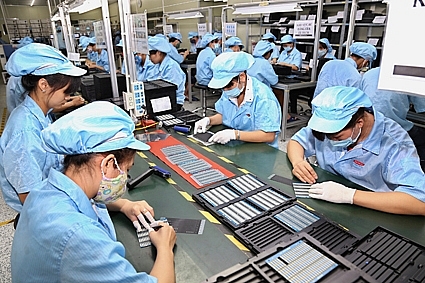UNDERSTANDING ROI IN QUALITY CONTROL
UNDERSTANDING THE ROI (Return On Investment) IN QUALITY CONTROL, IOT VISION INSPECTION
One of the first things that people will think about when applying machine vision solutions to their production line is: “What is the profit here?” or “What is the benefit of this investment?”. For me, what I think about is that I will use this device and replace 2, 3 or 5 people in my line. So this is my profit right away or the savings that I will have by replacing 2, 3, 5 people. Is this true!
In this article I will elaborate on the elements of ROI, the metrics that you may benefit from or that you may have overlooked when calculating ROI.
- Reduce labor costs:

For example, you have a number of workers performing a specific process and you want to replace it with machines. Currently, you spend a certain amount of money every month to pay the salaries of these workers. When you compare it with a machine, you see that it is not more economical. However, in reality, this cost is not only the salary but also includes the surrounding maintenance costs such as:
- Recruitment costs
- Training and education activities
- Employee benefits as prescribed by labor law: Insurance, support work, leave regime, ...
- Dealing with inconsistencies in performance
- Dealing with unexpected cases of increase or decrease or shortage of workers (for example, the impact of the covid19 epidemic)
Therefore, the cost is not only the salary but includes all the costs that you will have to invest in your workforce to carry out product quality control. So the first factor you can consider is reducing the cost of inspection manpower through the benefits of additional costs.
- Cost of poor quality products:

One issue that is difficult to clarify is the quality of product inspection, this is also the reason why machines are more suitable than humans.
Humans are inherently creative, so if they are left to do repetitive tasks, they will often get tired, bored and miss errors. In particular, human judgment is often subjective, and different between different people will make the output of inspection inconsistent.
This can lead to costly consequences due to poor quality of the product produced such as recall requests, loss of reputation with customers, in some cases when parts are produced and the defective parts are then sent to the next level of processing, it can also lead to increased rework costs for these defective parts or worse they will become scrap. So the second factor that you need to consider is automating the quality control process.
- Utilization:
Machine vision systems are inherently faster than humans, so you will see a reduction in quality inspection cycle times.
Machine vision systems and AI algorithms can come up with judgments in just a few hundred milliseconds or even faster, so if your product is taking a long time to inspect with humans, you can significantly reduce that and the benefit you get is not only a reduction in cycle time but also an increase in production volume, a reduction in your production cycle time. This will create an overall efficiency of the system, optimizing the usability. Apart from the cost of quality inspection, there are other benefits such as having the data stored digitally, having full traceability, you will have digital images that you can save and re-check those images, easily pull up images with just a few clicks because it is all stored securely digitally. So hopefully this article is helpful in shedding light on the ROI and effectiveness of machine vision systems.
